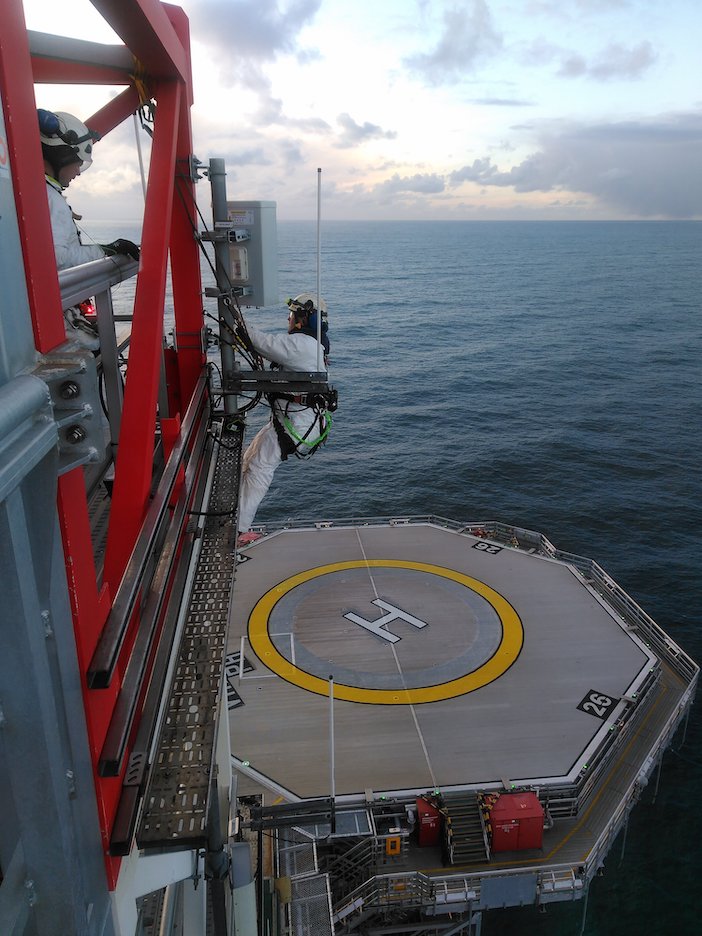Deutsche Telekom and Inmarsat have boosted the capacity of their European Aviation Network (EAN) inflight broadband solution through collaboration with Tampnet, a provider of high capacity, low-latency connectivity to offshore installations, mobile rigs and vessels.
The additional coverage is the result of the installation and maintenance of five EAN antenna sites on offshore production platforms in the North Sea. Two additional antenna sites are being placed in offshore wind farms within the coastal waters of Germany and the Netherlands (exclusive economic zones), and one more is already operational onshore in Norway.
The EAN broadband system combines dedicated satellite coverage with a complementary LTE-based ground network, and the sites were selected to further enhance EAN’s high-speed passenger connectivity on flights in Northern Europe, including high-density flight routes between the UK, the Netherlands, Denmark and Norway. They complement the 300 LTE-based ground network antenna sites already set up across Europe and will further strengthen EAN’s combined satellite and air-to-ground network performance.
The five sea-based antenna sites are co-located on the top of existing communication infrastructure on offshore production platforms and therefore benefit from Tampnet’s fibre network in the area. The necessary equipment was brought in via helicopter, often in challenging weather conditions. All engineering and installation activities were conducted in close cooperation with the platform owners and operators.

“Our extensive offshore network was the perfect fit for the EAN project,” said Elie Hanna, CEO of Tampnet. “Installing and maintaining an LTE network offshore is very challenging and we were honoured to have the opportunity to extend our expertise and engage in such an innovative and significant project for Europe and the aviation industry. Going forward, Tampnet will support the project by delivering fibre backhaul and maintenance to the base stations providing additional coverage to the airspace above the North Sea. The fact that the network is fully supported by our subsea network ensures its scalability for future capacity needs.”





